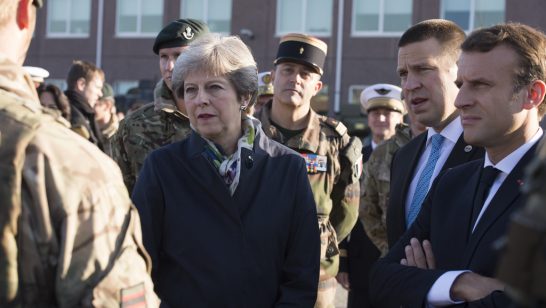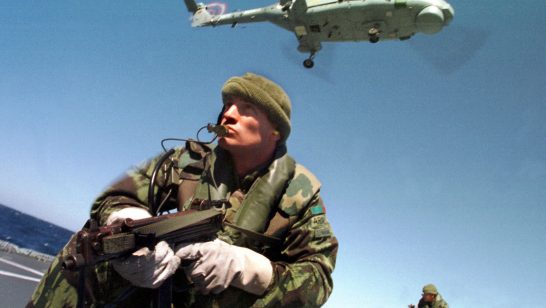
The UK’s withdrawal from the EU is a defining moment for the Common Security and Defence Policy (CSDP) since Britain was not only one of the main contributors but also a key veto player in this policy area. Therefore, it is unsuprising that one of the first consequences of Brexit was the launch of new proposal to push forward CSDP cooperation. This is has been done on two levels: first, by revising the CSDP governance model; and second, by upgrading the level of ambition in line with the provisions of the EU Global Strategy. Recent CSDP initiatives seemingly mark unprecedented steps towards a stronger and more integrated common defence policy. However, EU member states must in the end agree on clear commitments beyond declarations, as the window of opportunity created by Brexit may soon close.
A new core for EU defence
Since the CSDP was born out of a Franco-British initiative at St Malo, Brexit requires a rethinking of the “core” EU member states committed to driving forward CSDP. The question is: What could replace the Franco-British engine at the core of EU security and defence integration? Post-Brexit initiatives show that some member states are attempting to fill this gap.
Shortly after the British referendum, Germany, France and Italy issued a joint declaration to reaffirm their commitment to the European project. This included developing European defence and making the necessary commitments for joint operations, military capacity and industry, acknowledging that “the potential of a true Common Foreign, Security and Defence Policy has not been fully used”. France and Germany then made a further concerted push for closer EU defence co-operation through a six-page position paper released ahead of the September 2016 Bratislava European Council, calling for a new military headquarters, shared military assets and other proposals to boost CSDP under the overall framework of permanent structured cooperation. The proposal was supported by Italy and Spain in a letter sent to EU defence ministers on 11 October.
Although the practical implications of these proposals are still unclear and measures for the implementation of the EU Global Strategy will be decided at the upcoming Council meeting in December 2016, these initiatives demonstrate the willingness by some EU member states to move CSDP towards deeper integration.
A strong Franco-Italian-German engine would appear to be the safest and most sustainable new model as it would possess the necessary assets (military capabilities, political weight) to convince other member states to follow. While France and Italy have traditionally been active in promoting CSDP, Germany is a newcomer. A more proactive German leadership in foreign and security matters has been championed by several policy and decision-makers in Berlin and Germany is evolving from being a civilian power to taking on greater responsibilities in international security. This includes participating in military operations, as set out in the new White Paper on German Security Policy released in July 2016. This paradigm shift could benefit from burden and risk sharing with other EU partners, particularly considering current limitations faced by Germany such as domestic opposition to the use of force. For these reasons, German foreign and security policy orientations have shifted towards a renewed assertiveness, moving from estrangement to engagement in CSDP integration.
A new level of ambition
Another consequence of Brexit is redefining and increasing the level of ambition of the EU’s security and defence policy. This is closely linked to implementation of the new strategic doctrine, the EU Global Strategy, as presented by Federica Mogherini in June 2016; the security and defence implementation plan, announced at the September 2016 Bratislava European Council, to be presented at the December 2016 European Council meeting; and the new partnership framework between the EU and NATO,initiated by the Joint Declaration signed in July 2016 at the NATO Warsaw Summit.
Notwithstanding the political role setting up the CSDP at Saint Malo and some initial support (e.g. for the creation of the European Defence Agency in 2004), the UK gradually withdrew from supporting and investing in the CSDP, going as far as to oppose deeper integration. The formation of the Coalition government in 2010 led to a determined return to NATO and to bilateral partnerships, namely the 2010 Lancaster House Treaties with France which were reaffirmed in November 2015. As a result, the UK never fully committed to its 1998 Saint-Malo pledge and vetoed several initiatives aimed at boosting this policy area. For instance, it withheld the necessary budget to allow the European Defence Agency to operate and opposed moves towards military integration through Permanent Structured Cooperation. Brexit has therefore removed a CSDP veto player.
The absence of the UK from decision-making structures in Brussels now provides EU member states with a unique opportunity to make unprecedented bold steps towards a greater level of ambition for the CSDP on the basis of EU Global Strategy’s recommendations. The Global Strategy, released only a few days after the Brexit vote, made it clear that the EU needs to be strategically independent, yet modify its level of ambition in tackling external crises, promote resilience and take an integrated approach. However, turning these bold proposals into practical measures will not be easy. Proposals under elaboration by the security and defence implementation plan cover almost all aspects of cooperation, ranging from defence planning to capability generation. Examples include: the use of permanent structured cooperation, as introduced by the Lisbon Treaty; the creation of a permanent military and civilian headquarters in Brussels to autonomously conduct EU operations; strengthening EU Battlegroups and Eurocorps; a revamped capability plan; and new financing mechanisms.
Conclusion
The EU is close to making one of the biggest leaps forward in its security and defence cooperation since the St Malo Declaration. A new core of EU member states (France, Germany, Italy) have emerged and are willing and able to push integration forward, replacing the previous Franco-British engine. The EU Global Strategy has introduced a new level of ambition, paving the way for a bigger role for the EU in global security. Brexit has made it easier for EU member states to find a new consensus on policy reforms. However, the crucial test will be to agree clear political commitments and turn them into concrete measures for more united European defence. This must happen fast: external threats are intensifying, multiplying and diversifying; internal EU politics is becoming more vulnerable to populist forces and anti-European sentiments. The window of opportunity for the CSDP will not be open forever.
The opinions articulated above represent the views of the author(s), and do not necessarily reflect the position of the European Leadership Network or any of its members. The ELN’s aim is to encourage debates that will help develop Europe’s capacity to address the pressing foreign, defence, and security challenges of our time.



